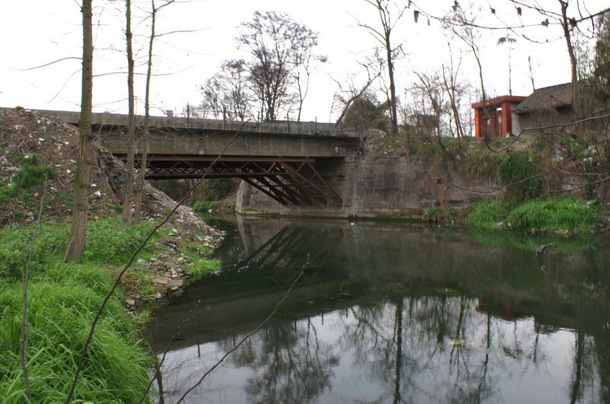|
||||||||||
|
FEATURESDragon Bridges Sichuan 四川龍橋Sang Ye with Geremie R. Barmé
'Dragon Bridges' were once a common sight in the Guanghan 廣漢 area of Sichuan province. They were called 'dragon bridges' because dragons were carved on the pylons that faced in the direction of oncoming water. These were said to help 'quell the waters'. Another feature of the bridges was that they had no handrails so a torrent could easily course under and over the structure in times of flood, or when a river was in spate. A dozen such 'dragon bridges' survived into the Republican era (from 1912). From the 1930s, however, they were gradually replaced by steel and concrete structures. In recent years these in turn have been replaced by elevated bridges. In Guanghan we spoke to a middle-school principal as well as officials in the local cultural bureaucracy and government. They all claimed that no dragon bridges remained in the area. They said there weren't even any remains of old bridges. In an effort to locate the spot that Boerschmann took this picture from we found a ninety year-old man, known as Old Luo 老羅, who had worked on maintaining the old bridges.[Fig.1] He said: This one [in the picture] was destroyed back in 1935 when they built the first modern road from Xi'an [in Shaanxi] to Chengdu [in Sichuan]. They replaced it with a motorway. The road became National Road No.108 after Liberation [in 1949]. Since they finished the highway a few years ago traffic on 108 has dropped off. The bridge is basically useless. The mayor, who was with us at the time, asked: How come the motorway they put in during the Republic had no railings either. Did the water really get up that high during a flood? The old bridge-builder replied: If the water rose that high the whole county would be submerged. Originally there were steel railings along the side of the bridge, but during the Great Leap Forward [in the late 1950s] the were all taken to smelt into iron. The mayor said: It's a real shame that all the dragon bridges have been destroyed. Back then people didn't realize what a precious resource they had. In my opinion we can rebuild them as a draw card for tourists. When we get to work we'll be calling on you, Old Luo, to give us some advice. The old man replied quietly: The water's no good. The river's little better than a stinking ditch. Everyone wants to get away from it. You couldn't even pay people to come here to look at it.[Fig.2]
|
